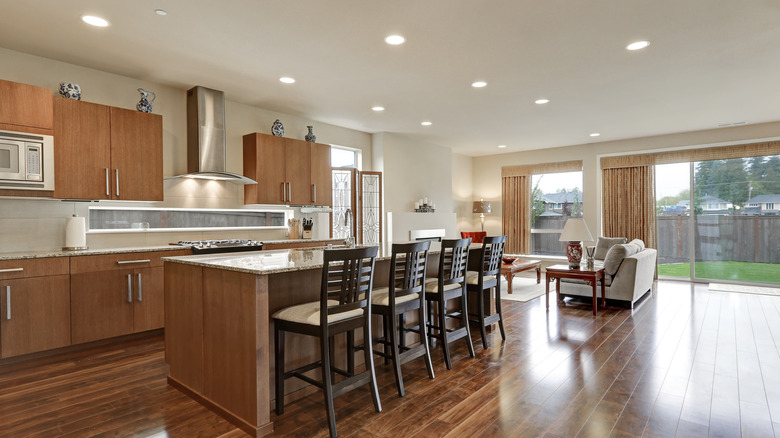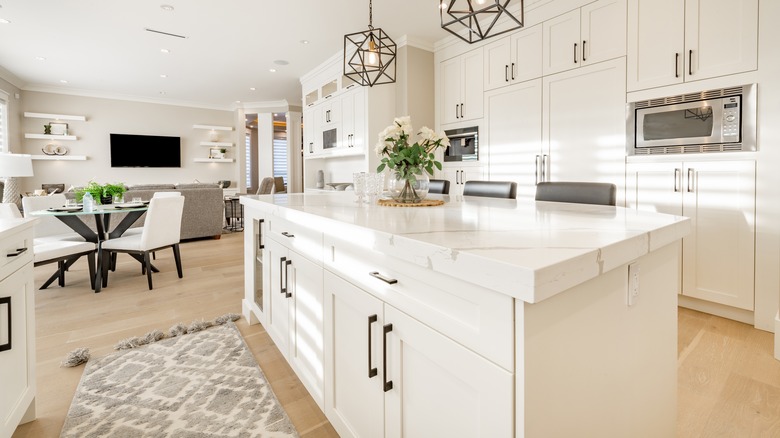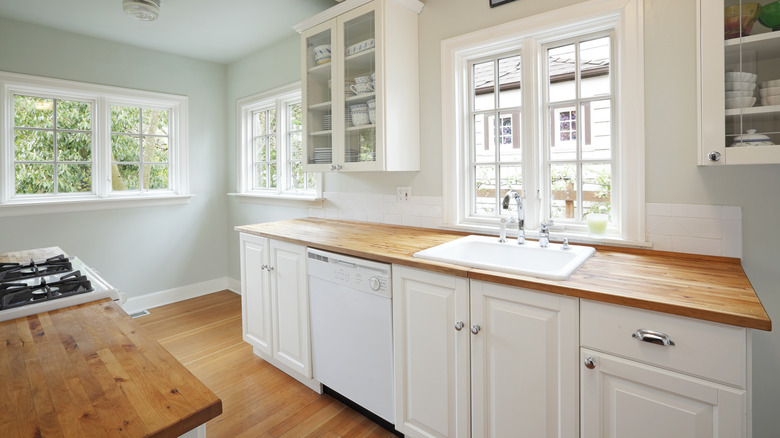Open Vs Closed Kitchens: What's The Difference And Which Is Right For Your Home?
Homeowners often oscillate between open and closed kitchen concepts when remodeling their kitchens. In theory, the only distinguishing factor between the two is the absence of more than one wall in the kitchen for open and the presence of walls on all sides for closed. But, in reality, it goes beyond just walls. So it's important to understand the differences between them as well as the pros and cons of each style to pick one that suits your lifestyle and is right for your home.
An open kitchen does away with physical barriers between the cooking space and living room, allowing you to spend some quality time with your family members and entertain your guests while you put together a meal. Moreover, this kitchen visually enhances the cooking space but doesn't offer much in terms of privacy. In comparison, a closed kitchen establishes boundaries, giving you some much-needed privacy and freedom to make a mess of your cooking space.
Open kitchens
Open kitchens promote multitasking among family members, encourage communication, maximize your floor plan visually, and are more functional. For instance, this kitchen concept lets you cook dinner while helping your kids with their homework or regaling your guests with stories of adventures past. This style also enhances the flow of natural light in your kitchen and promotes ventilation, creating a pleasant and informal ambience. When done right, open-plan kitchens transition into the next room creating a cohesive space that is both functional and inviting.
Although they're a winning concept and embody several benefits of modern kitchens, they're not without their limitations. The most pressing is the complete lack of privacy. In an open kitchen, your messy dishes and countertops will be clearly visible to your guests. Moreover, any mess in the kitchen will make your entire living room feel cluttered by association. Additionally, the sounds and smells from your kitchen will detected around your house.
Closed kitchens
More traditional than their open counterparts, closed-plan kitchens are ideal for individuals who crave privacy while preparing meals (and satiating their midnight snack cravings in peace). The presence of walls on all sides translates to more storage space and cabinets for you. Further, the sounds of grinders and the banging of pots and pans remain contained, to a great extent, in the kitchen. Similarly, strong smells, like that of fish, don't spread throughout the house. The best part, though? You can easily hide your tower of dishes from your guests and tackle them the next day.
But closed kitchens put a kibosh on seamless conversations and can make it difficult for you to interact with your guests, especially if you've to flit constantly between the kitchen and living room to serve dishes. The solid boundaries in this traditional kitchen can even make your space seem smaller than it is, turn the room hotter, and hinder the flow of natural light.


